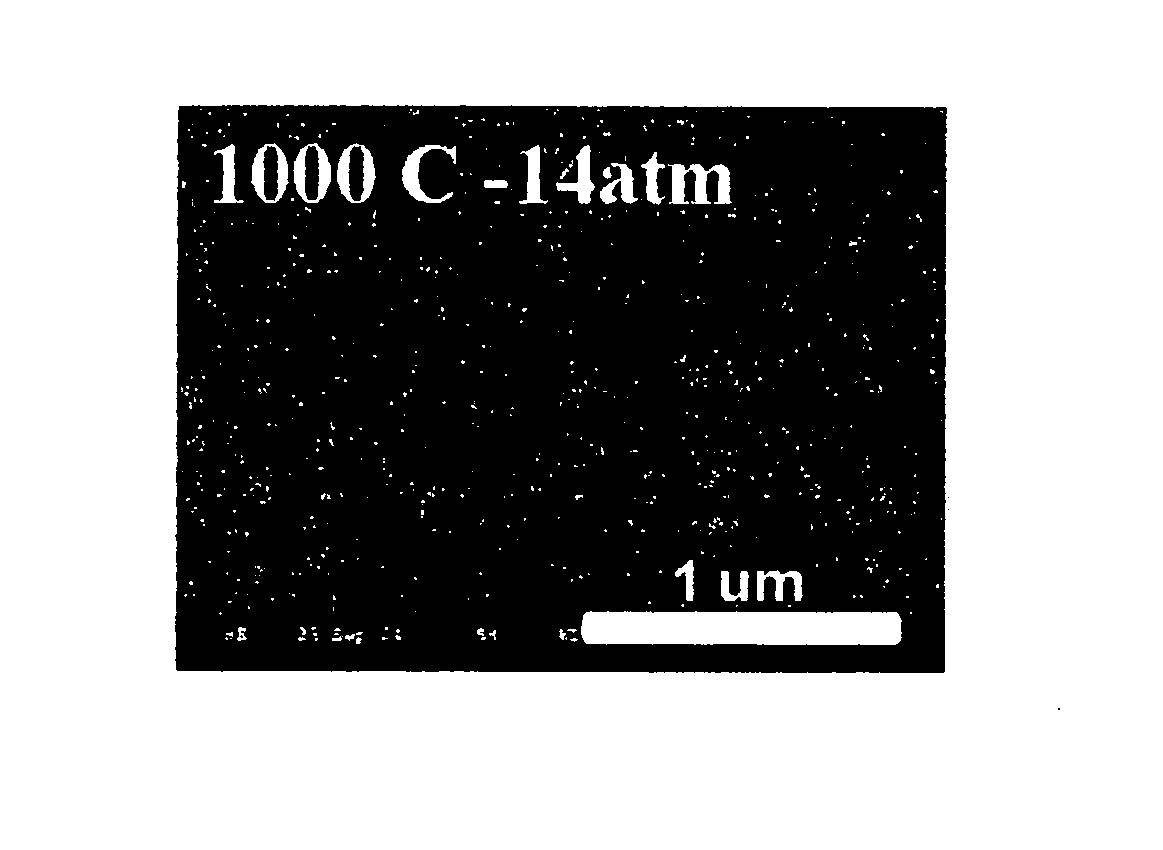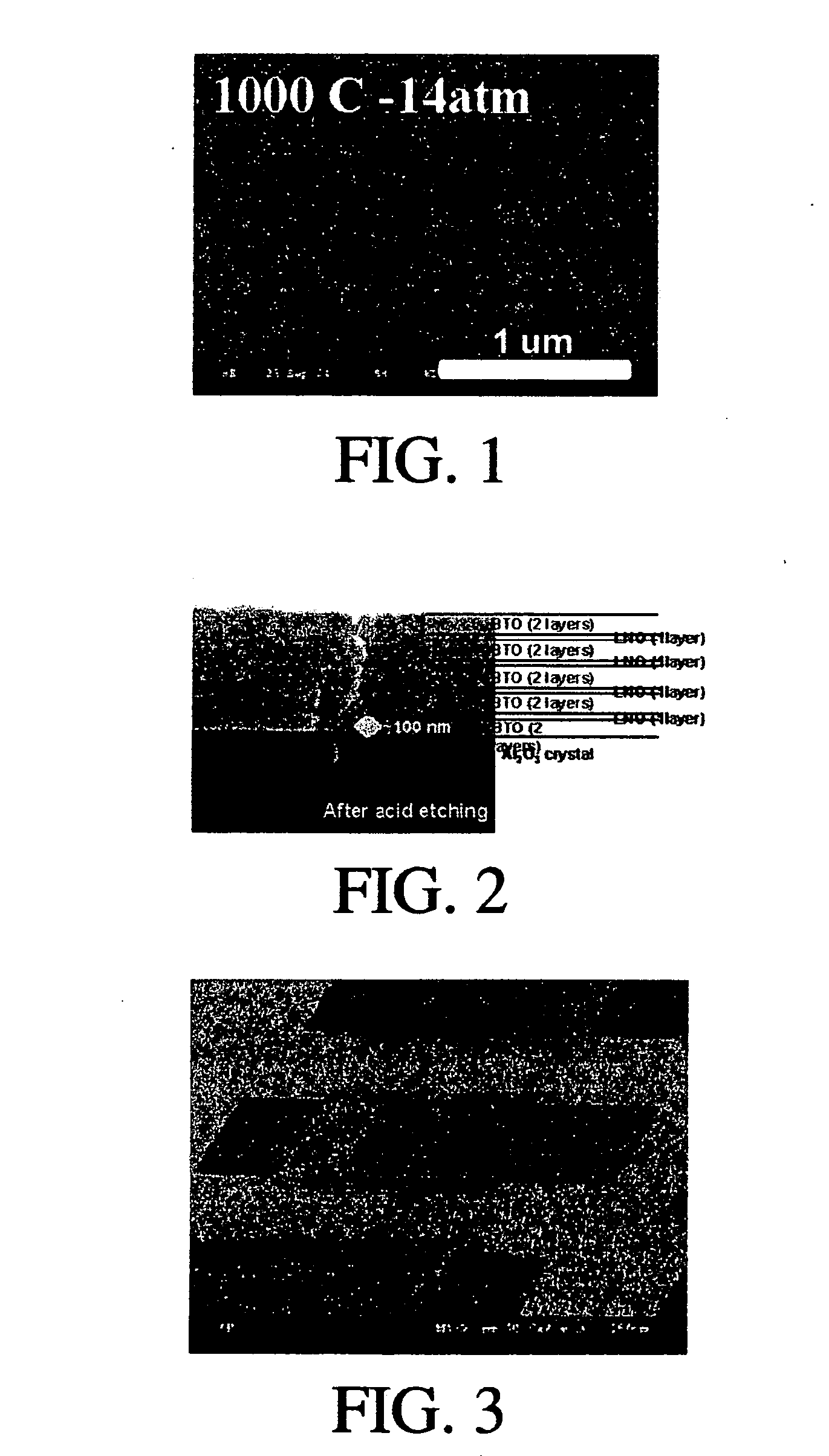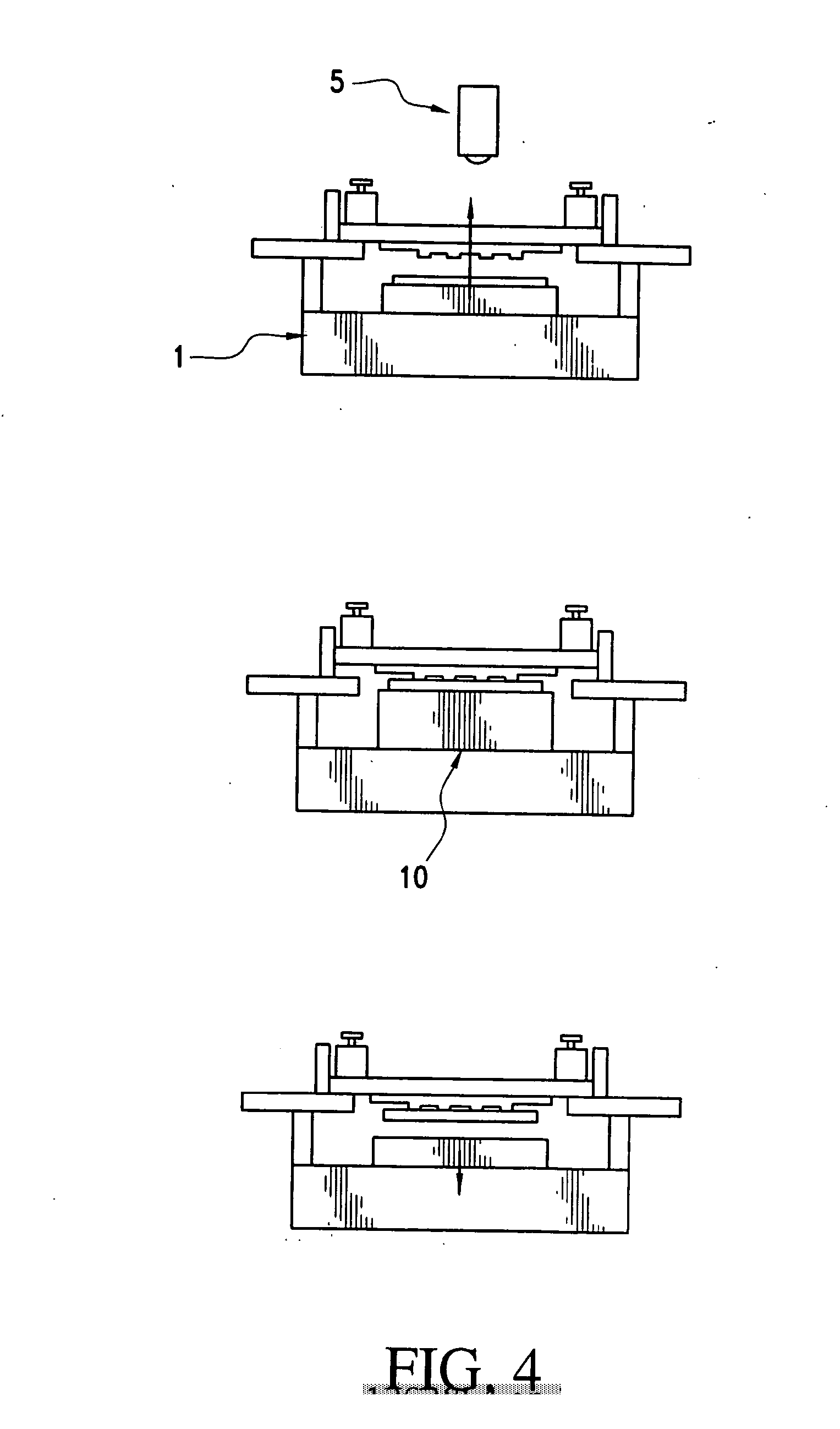Microcontact printed thin film capacitors
a thin film capacitor and microcontact technology, applied in the field of multi-layer capacitors, can solve the problems of comparatively large margins, comparatively rough edges on the electrodes, and inability to achieve films with thicknesses, etc., and achieve the comparatively large margins that are required in typical multi-layer capacitors
- Summary
- Abstract
- Description
- Claims
- Application Information
AI Technical Summary
Benefits of technology
Problems solved by technology
Method used
Image
Examples
example 1
Formation of Blanket Thin Film of Stoichiometric BaTiO3 on Ni Foil Substrates by Chemical Solution Deposition
[0039] A Ba precursor solution is made by dissolving 0.01 mol of Ba acetate in 11.74 ml glacial acetic acid. The resulting solution is stirred for 1 hr at 90° C.
[0040] A Ti precursor solution is made by dissolving 0.01 mol of Ti isopropoxide in 2 ml of acetyl acetone.
[0041] A stoichiometric BaTiO3 precursor solution is made by mixing the Ba precursor solution and the Ti precursor solution, and stirring for 1 hr at 90° C. Methanol is added to reduce the stoichiometric BaTiO3 precursor solution molarity to 0.1M.
[0042] The BaTiO3 precursor solution is spin cast at 3000 RPM for 30 sec onto a 99.99% pure Ni foil substrate that is preannealed at 900° C. The film of BaTiO3 precursor solution is dried at 180° C., pyrolyzed at 360° C. and crystallized by rapid thermal annealing at 750° C. This sequence of steps is repeated 8 times to produce a BaTiO3 film thickness of 350 nm. The ...
example 1.1
[0043] The procedure of example 1 is followed except that the sequence of steps is repeated six times to yield a BaTiO3 film thickness of 265 nm. The dielectric constant of the film is 1750 at room temperature and 1600 at 150° C.
example 1.2
[0044] The procedure of example 1 is followed except that the sequence of steps is repeated four times to yield a BaTiO3 film thickness of 173 nm. The dielectric constant of the film is 1300 at room temperature and 1250 at 150° C.
PUM
| Property | Measurement | Unit |
|---|---|---|
| thickness | aaaaa | aaaaa |
| thicknesses | aaaaa | aaaaa |
| temperature | aaaaa | aaaaa |
Abstract
Description
Claims
Application Information
 Login to View More
Login to View More - R&D
- Intellectual Property
- Life Sciences
- Materials
- Tech Scout
- Unparalleled Data Quality
- Higher Quality Content
- 60% Fewer Hallucinations
Browse by: Latest US Patents, China's latest patents, Technical Efficacy Thesaurus, Application Domain, Technology Topic, Popular Technical Reports.
© 2025 PatSnap. All rights reserved.Legal|Privacy policy|Modern Slavery Act Transparency Statement|Sitemap|About US| Contact US: help@patsnap.com



